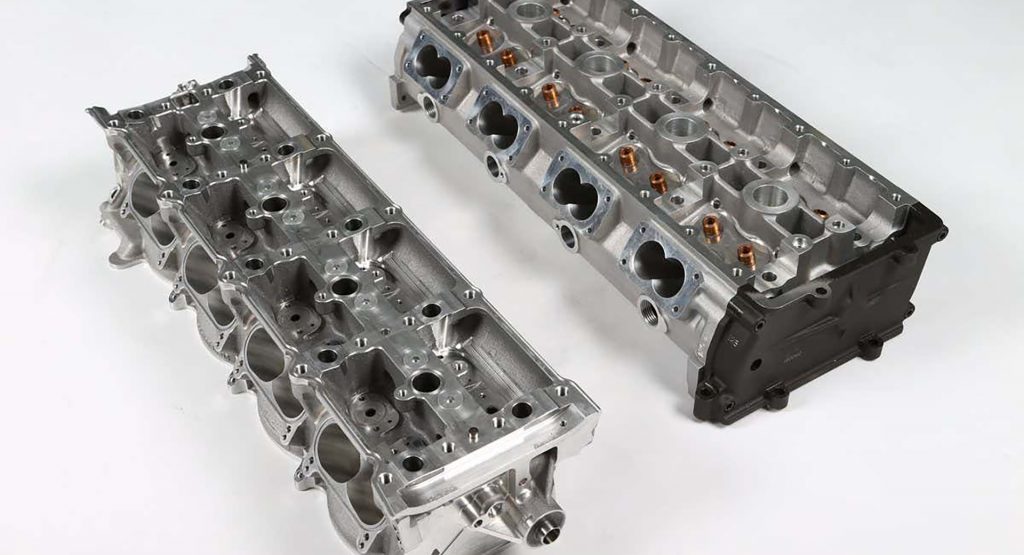Ever since its inception, Formula 1 has always been the premiere level of motorsport, and as such, the cars that race in it are some of the most technologically advanced on the planet. That being said, what was advanced 50 years ago is not so advanced by modern standards, and we can perform a good comparison by looking at the engines.
The comparison was first brought up on Twitter by Matt Grant, co-owner of Cosworth parts supplier Modatek.
Pictured below are two Formula 1 engine blocks from Cosworth, about 50 years apart. The one on the right is from a 1967 Cosworth DFV (double four valve) 3.0L V8 and the one on the left is from a 2013 Cosworth CA 2.4L V8.
See: McLaren Making Big Changes To Their 2021 F1 Car – Will It Work Out?
The DFV is one of the most famous F1 engines of all time, powering many iconic cars in the history of the sport. The 90-degree V8 won its first race in 1967 with Jim Clark, and went on to win 155 more until the end of its run in 1983 with Keke Rosberg.
By contrast, the CA might not have been as much of a winning machine as the DFV, but it was still a good engine and allowed many smaller teams, who had restricted finances, to partake in the sport. What the CA’s true claim to fame was, however, was it being the last V8 in F1, since the series made the switch to a V6 hybrid system in 2014.
Some more comparative photos of the progress made in #F1 engine design over a period of nearly 50 years. Piston, head and block from the Cosworth CA from 2013 (on the left) versus the DFV from 1967 (on the right). pic.twitter.com/V77H2NuLKM
— Matt Grant (@Racing_Matt) December 29, 2020
If we look at the two engines, we can see all the technological progress that has been made in the 46 years that separate them. The first thing you’ll notice right away is the size difference, despite the CA only being 0.6L smaller than the DFV. Thanks to Computer Aided Design (CAD) and Computer Numerical Control (CNC) machining we are able to manufacture much more advanced, efficient designs compared to what was possible nearly half a century ago.
If we look at the piston heads of the two engines below, we can see a similar size difference between them as we did with the engine blocks. Again, the 2013 CA’s piston heads are able to be so much smaller and lighter than the 1967 DFV’s without sacrificing strength due to all the advancements made in manufacturing processes and materials.
Read: Vanwall Brand Brought Back From The Dead, Will Launch Six 1958 F1 Continuation Cars
And even since 2013, F1’s scientists and engineers have made huge strides in power unit technology and efficiency, now having the hybrid system to deal with in addition to the engine. For example, some of the current F1 engines are able to operate at 50 percent thermal efficiency, which means that 50% of the engine’s fuel is converted into propulsion force and the other 50 percent is lost as heat. That might not sound great, until you realize that a regular road car’s engine operates at a thermal efficiency of around 30 percent. That’s only one of so many advancements made since then, and more are being made every single day.
Opening photo: Mark Grand of Modatek @ Twitter



